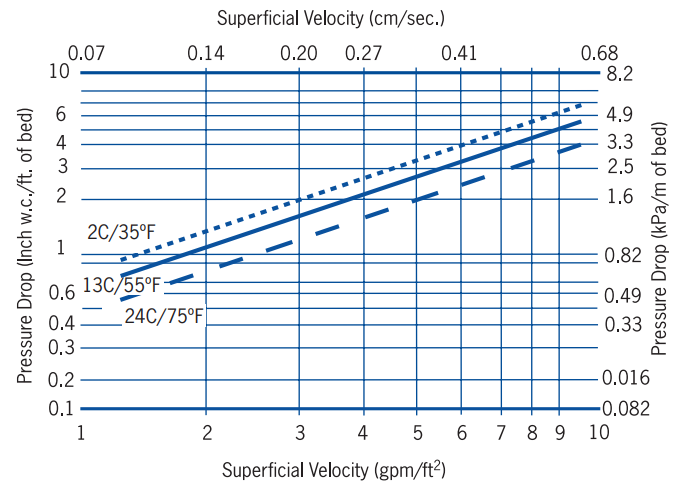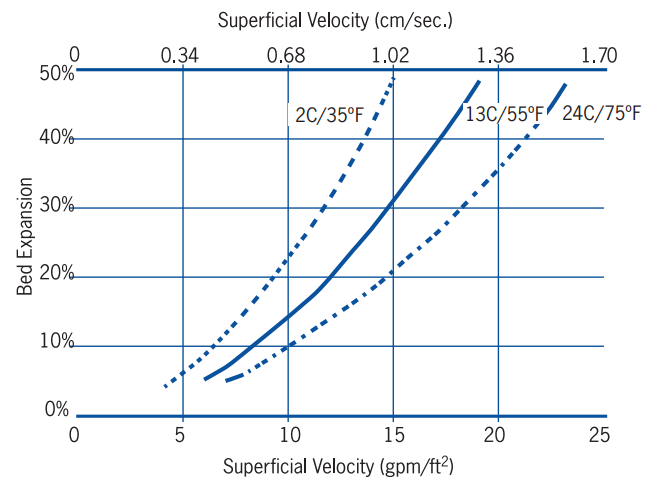Knowde Enhanced TDS
Identification & Functionality
- Chemical Family
- Industrial Additives Functions
- Technologies
Features & Benefits
- Industrial Additives Features
- Features
- Calgon Carbon’s reagglomerated coal-based granular activated carbons have several properties which provide superior performance in a wide range of applications
- Produced in the United States from a pulverized blend of high quality, domestically mined bituminous coals resulting in a consistent, high quality product.
- Carbon granules are uniformly activated through the whole granule, not just the outside, resulting in excellent adsorption properties and constant adsorption kinetics.
- The reagglomerated structure ensures proper wetting while also eliminating floating material.
- High mechanical strength relative to other raw materials, thereby reducing the generation of fines during backwashing and hydraulic transport.
- Carbon bed segregation is retained after repeated backwashing, ensuring the adsorption profile remains unchanged and therefore maximizing the bed life.
- Reagglomerated with a high abrasion resistance, which provides excellent reactivation performance.
- High density carbon resulting in a greater adsorption capacity per unit volume.
- Custom Reactivation
- Municipal drinking water utilities can extend the life of their FILTRASORB granular activated carbon while lowering their operating costs through participation in Calgon Carbon’s Custom Municipal Reactivation (CMR) program.
- After a granular activated carbon’s adsorptive capacity has been exhausted, it can be returned to Calgon Carbon for thermal reactiva-tion (upon carbon acceptance approval). In the reactivation process, the spent activated carbon is heated to a high temperature in furnaces devoid of oxygen, using steam as a selective oxidant. The high temperature reaction with steam serves to restore the adsorptive capacity of the activated carbon.
- The CMR program ensures that each customer receives their own GAC back after reactivation. The benefits of using a custom reactivated GAC versus a virgin carbon are several, including: a) economic, as reactivated GAC costs less than virgin GAC, and b) environmental, as use of reactivated GAC conserves natural resources and reduces CO2 emissions compared to the manufacture of virgin GAC. Another benefit of reactivating and reusing spent granular activated carbon is the ability for customers to ensure for themselves a reliable supply of GAC when needed, as the spent/ reactivated carbon represents a renewable resource. Finally, through reactivation, the costs and long-term liability associated with disposal of spent GAC are eliminated.
- The combination of high mechanical strength and the dense granular structure of FILTRASORB brand GAC, a product of both the bituminous coal starting material and the reagglomeration manufacturing process, results in a GAC ideal for reactivation, with excellent adsorptive performance and low losses.
- Recycling and Reactivation
Though FILTRASORB is 100-percent freshly manufactured virgin GAC, it can be recycled and reused through thermal reactivation to restore its adsorptive capacity. This eliminates the costs and long-term liability associated with the disposal of spent GAC, and provides customers with a consistent, reliable supply of filtration media.
Applications & Uses
- Markets
- Applicable Processes
- Industrial Additives End Use
Properties
- Typical Properties
| Value | Units | Test Method / Conditions | |
| Apparent Density (Tamped) | 0.58 | g/cc | - |
| Effective Size | 0.8 - 1 | mm | - |
| Non-Wettable | max. 1 | % | - |
| Water Extractables | max. 1 | % | - |
| Screen Size (by Weight, US Sieve Series on 8 mesh) | max. 15 | % | - |
| Moisture Content (by Weight) | max. 2 | % | - |
| Uniformity Coefficient | max. 2.1 | - | - |
| Screen Size (by Weight, US Sieve Series Through 30 mesh) | max. 4 | % | - |
| Trace Capacity Number | min. 10 | mg/g | - |
| Abrasion Number | min. 78 | - | - |
| Iodine Number | min. 900 | mg/g | - |
Regulatory & Compliance
- Regulatory
FILTRASORB 300-M is designed to comply with all the applicable provisions of the AWWA Standard for Granular Activated Carbon, B604, latest edition, the stringent extractable requirements of NSF/ ANSI 61, and the Food Chemicals Codex, latest edition.
Technical Details & Test Data
- Process
This activated carbon is manufactured from select grades of bituminous coal through a process known as reagglomeration to produce a durable granular product capable of withstanding the abrasion associated with repeated backwashing, air scouring, hydraulic transport, and thermal reactivation. The raw coal is mined and subsequently manufactured into GAC in the United States to ensure the highest quality and consistency in the finished product. Activation is carefully controlled as measured by the iodine number for effective adsorption of a broad range of high and low molecular weight organic contaminants. The higher density of FILTRASORB brand GAC results in a product with both a greater adsorptive capacity on a volume basis and a longer life through multiple reactivation cycles.
- Typical Pressure Drop
Based on a backwashed and segregated bed

- Typical Bed Expansion During Backwash
Based on a backwashed and segregated bed

- Conditioning and Backwashing
Backwashing and conditioning fresh GAC before placing into operation is critical to GAC performance. The reasons for backwashing before placing fresh media online are to: (1) size segregate the media so subsequent backwashing will return the media to the same relative position in the bed, (2) remove any remaining air from the bed, and (3) remove media fines which can lead to excessive pressure drop and flow restriction. In addition, proper backwashing is a crucial step to collecting the most representative and meaningful post-start up data on compounds of interest, such as metals listed in the NSF/ANSI 61 standard.
Below are the recommended steps for proper conditioning and backwashing of GAC based on Filtrasorb 300-M GAC being backwashed at 55°F:
- Fully submerge GAC bed in clean, contaminant free water for at least 16 hours (overnight)
- Open backwash inlet and begin up-flow at 5 gpm/ft2 for 2 minutes
- Increase flow to 8 gpm/ft2 and maintain for 2 minutes
- Increase flow to 11 gpm/ft2 and maintain for 2 minutes
- Increase flow to 15 gpm/ft2 and maintain for 30 minutes (Duration representative of initial backwash conditions. Required duration during operational backwashes can be shorter but will vary by utility, solids load, and GAC throughput.)
- Decrease flow to 11 gpm/ft2 and maintain for 2 minutes
- Decrease flow to 8 gpm/ft2 and maintain for 2 minutes
- Decrease flow to 5 gpm/ft2 and maintain for 2 minutes
- Close backwash inlet and stop flow.
- Design Considerations
As a replacement for existing filter media, conversion to FILTRASORB 300-M granular activated carbon imposes no major change to a plant’s normal filtration operations. If more contact time is required, the height of the backwash troughs can be increased. Calgon Carbon Corporation can also provide complete modular adsorption systems as an add-on treatment stage if required.
Safety & Health
- Safety
Wet activated carbon can deplete oxygen from air in enclosed spaces. If use in an enclosed space is required, procedures for work in an oxygen deficient environment should be followed.

